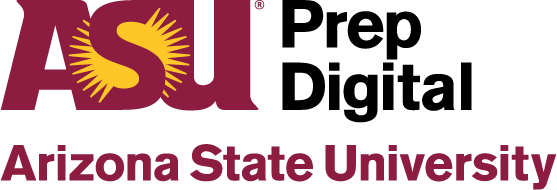The way we teach is ever-changing. And that’s a good thing.
Whereas the traditional lecture was once perceived as the best method of educating a room full of students, today there’s increased value in creating a two-way line of communication between educators and learners.
It’s commonly understood that the key to successful teaching is meeting students where they are. That starts by understanding their unique mindsets (the way they best absorb and apply information) and how they like to communicate.
It’s especially true for math teachers, who have the task of teaching a perceivably challenging subject to a class of varied learners. Despite old schools of thought, teaching math is so much more than crunching numbers.
“Math teachers have an opportunity to broaden their toolbox by teaching in the variety of different modalities that are now available,” explained Alison Hernandez, Director of Professional Development & Learning Initiatives at ASU Prep Digital. “Math class shouldn’t just be a lecture with required note-taking. It’s much more productive when teachers welcome the concepts of collaboration (between student and teacher, and among peers) and hands-on learning.”
That’s why ASU Prep Digital created its Math Institute for teachers. This collection of live online training sessions shows teachers how to incorporate more of those learning experiences into their classroom setting whether they teach in-person, virtual, or both.
“Our online training helps teachers learn strategies on how to engage students using different technology and tools—some that aren’t necessarily math rich—to support student engagement and collaboration,” added Alison.
The sessions are hosted via Zoom and cover creative and innovative ways to address learning gaps, accelerate learning and promote learning retention among students.
“We start by considering the neuroscience behind the various learning mindsets we see in math students, then finding ways to continuously support them by reflecting on our own mindsets and best practices. It’s about asking yourself: How did I learn math? How do I teach my students now? Do I understand their different learning styles? And how do I implore them to use different strategies and approaches to be successful in their studies?,” Alison continued.
ASU Prep Digital’s Math Institute reviews a series of best practices that math teachers can leverage to address each of their students’ unique needs:
-
-
- Increase learning retention
Understanding the importance of revisiting concepts and spiraling teachings to help students bridge the gaps between different math lessons.
-
- Allow students to make mistakes
Intervening when a student gets a math problem wrong by stepping in to provide immediate problem-solving support.
-
- Build strong foundations
Ensuring students are set up for success later in their academic careers by focusing on math fluency and number sense at the earliest opportunity.
-
- Increase math talks in the classroom
Having rich conversations about math as a language so students grow progressively comfortable with articulating and discussing it with their teachers and peers.
-
- Integrate more rich tasks
Making space for higher-level thinking and collaboration to facilitate rich math discourse and help students learn to pivot in their learning environments.
-
- Help students map their thinking
Bridging connections by incorporating graphic organizers or notetakers into the classroom to show students how individual lessons fit into the big picture of their math education.
-
- Encourage self-reflection
Allotting regularly scheduled time for students to set goals and capture their learnings, struggles and accomplishments in a reflective journal or portfolio to share with their teacher for real-time support.
ASU Prep Digital’s Math Institute explores each of these best practices in great detail, and provides math teachers with practical means to apply them. Arizona teachers can register and participate in the training sessions for free and earn professional development credit for completing them.
-
- To learn more and sign up, visit asuprepdigital.org/training.


